Dr Vino's wine blog
wine talk that goes down easy
I can’t believe it’s not Albariño!
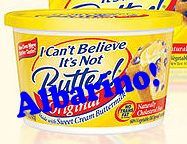 Down under, thousands of liters of a certain white wine are resting in tanks right now. The only trouble is that nobody’s sure what to call it once it’s bottled.
Down under, thousands of liters of a certain white wine are resting in tanks right now. The only trouble is that nobody’s sure what to call it once it’s bottled.
In the 1980s, the Australian research institute CSIRO imported what they thought were Albariño vines from Spain. Eventually, market demand led to propagation of the vines; about 70 producers make it today.
But a couple of years ago Jean-Michel Boursiquot, a expert vine identifier (who knew?) from the University of Montpellier, spotted the vine thought to be Albariño and suggested that it was, in fact, the savagnin blanc grape often found in the Jura region of France (who in Australia will be the first to make it in an oxidative, vin juane style?). The Australian authorities confirmed this earlier this year, after the harvest but before bottling. Thus the producers can no longer call it Albariño and there’s no consensus on whether they should adopt the Savagnin Blanc labeling or even try Traminer, it’s genetic twin. But time is ticking as bottling time approaches.
Any thoughts? Here were some suggestions that came up in our seminar this afternoon:
* Albari-not
* The grape formerly known as Albariño (actually a symbol)
* I can’t believe it’s not Albariño! (Credit goes to Max Allen)
Further reading: “Albariño and Savagnin, MencÃa and Jaen” [Jancisrobinson.com]
The state of Australian wine – and Landmark Australia
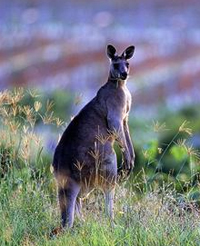 Over the past couple of decades, Australian wine has seen two tremendous, parallel booms, one at the low end and one at the high end. But now the industry is now suffering through a bust, particularly acute at the higher end.
Over the past couple of decades, Australian wine has seen two tremendous, parallel booms, one at the low end and one at the high end. But now the industry is now suffering through a bust, particularly acute at the higher end.
This epic tale has received attention from other wine journalists recently including Jay Miller’s February article in the Wine Advocate (“Australia: Into the Abyss”), Jancis Robinson in the FT (“How Australia went down under“), and Mike Steinberger in Slate (whose memorable line was “Foster’s may be Australian for beer (mate); it appears that screwed is now Australian for wine.”). Read more…
The X’d files: an exchange not seen on eRobertParker.com
 The forums at eRobertParker.com are a lively place. Unfortunately, they are often moderated with a heavy hand: several voices have been expelled and some threads that have even a whiff of criticism are deleted in their entirety.
The forums at eRobertParker.com are a lively place. Unfortunately, they are often moderated with a heavy hand: several voices have been expelled and some threads that have even a whiff of criticism are deleted in their entirety.
Such was the case with a thread last week concerning Mike Steinberger’s recent Slate column about the state of Australian wine. Mark Squires, who moderates the Parker board, accused Steinberger of selecting “biased” retailers for the story. One of the retailers shot back with a stinging rebuttal of the bias claim. Shortly thereafter, the thread was deleted in its totality.
Subsequently, Steinberger had an email exchange with Squires. Steinberger questioned the decision to delete the thread and said it had unfairly deprived him of a chance to respond to Squires’s assertions. Squires was unmoved, and a spirited discussion followed. With Steinberger’s permission, I am posting the exchange here. Sit back and pass the popcorn.
****
From: mhsteinberger
To: msquires
Sent: Thursday, April 9, 2009 11:21:34 PM Read more…
Philip Laffer of Jacob’s Creek on Riesling, petrol, and screwcaps
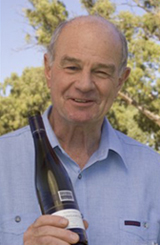 In January, I tasted one of Australia’s most well-regarded wines, the Jacob’s Creek, Steingarten Riesling. Unfortunately, the bottle was not showing well that day. But, fortunately, I was with Philip Laffer, the Chief Winemaker of Jacob’s Creek so I sat down with him and talked about Riesling. Given John Gilman’s previous comments about Australian Riesling on this blog, I had to ask him about screwcaps (Stelvin closures) and reduction (anti-oxidation). He also shared his thoughts how many years he likes on a Riesling, why “petrol” is a bad thing, and why Australia is a good place for Riesling.
In January, I tasted one of Australia’s most well-regarded wines, the Jacob’s Creek, Steingarten Riesling. Unfortunately, the bottle was not showing well that day. But, fortunately, I was with Philip Laffer, the Chief Winemaker of Jacob’s Creek so I sat down with him and talked about Riesling. Given John Gilman’s previous comments about Australian Riesling on this blog, I had to ask him about screwcaps (Stelvin closures) and reduction (anti-oxidation). He also shared his thoughts how many years he likes on a Riesling, why “petrol” is a bad thing, and why Australia is a good place for Riesling.
In switching to screwcaps have you replaced one problem, TCA taint, with another problem, reduction?
Yes, in a sense. But in the main, I think we’ve managed the reduction problem by changing our yeasts and by making sure the wines are scrupulously clean when we bottle. Now, having said that, Read more…
Gonon vs. Leeuwin: a Syrah – Shiraz shootout
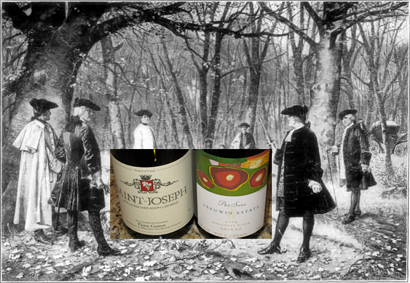
Okay, there was no shootout. Sort of a duel, but without the guns, wounds or Aaron Burr.
In honor of Australia Day last week, and because I think syrah is most seasonally apt in the winter, I tried a Northern Rhone syrah against an Aussie shiraz. Normally you’d think this would be a no-brainer since although it is the same grape by a different name, the stylistic differences can be oceans apart (literally).
But I did try to raise the degree of difficulty by picking a “European-style” shiraz, the Leeuwin Art Series 2005 from the Western Australia region of Margaret River with an alcohol level of rolling in at a mere 13% (find this wine). Against it, I poured a Saint-Joseph ’06 from the small producer Pierre Gonon (find this wine).
I found the Gonon to be excellent, with notes of characteristic black olives that I really dig in a good St. Joseph. It has a mouth-filling character thanks to some gentle oak but has a minerally, ashy core that gives it great poise and balance. The Leeuwin, by contrast, has much more fruit-driven aromas–think raspberry, cherry, and blackberry–as well as a dash of eucalyptus freshness. The palate was bigger than the Gonon and more New World but not to the point of being jammy or extracted. And the lighter alcohol was a relief from many a shiraz.
I was with three other people and although the Gonon edged ahead in my view, the group split with two for each. So the showdown saw both participants walk away unscathed. If only Hamilton had been so lucky.
Screwcaps, scores, riesling, the Loire, Cali cab: John Gilman part two
 We’re back with Part Deux of our interview with John Gilman, author of the newsletter A View from the Cellar (part one is here). John has offered a free issue from his backlist to any Dr. Vino reader so surf on over to his site and check it out. In this part of the Q&A, I had intended John to give a quick thumbs up or thumbs down on a number of hot-button issues in the wine world today as well as some things that I’ve heard him express unusual views about. In case you thought you were done gorging during the holidays, you can now feast on John’s 7,000+ words in this second part. So buckle up and get ready to hear his thoughts on what’s wrong with Riesling from Austria and Australia, screwcaps and their problems, the Loire, California cab then and now, indigenous yeasts, roto-fermenters, small oak barrels, wines over 14% alcohol and why he uses scores!
We’re back with Part Deux of our interview with John Gilman, author of the newsletter A View from the Cellar (part one is here). John has offered a free issue from his backlist to any Dr. Vino reader so surf on over to his site and check it out. In this part of the Q&A, I had intended John to give a quick thumbs up or thumbs down on a number of hot-button issues in the wine world today as well as some things that I’ve heard him express unusual views about. In case you thought you were done gorging during the holidays, you can now feast on John’s 7,000+ words in this second part. So buckle up and get ready to hear his thoughts on what’s wrong with Riesling from Austria and Australia, screwcaps and their problems, the Loire, California cab then and now, indigenous yeasts, roto-fermenters, small oak barrels, wines over 14% alcohol and why he uses scores!
German Riesling
To my mind this is clearly the most singularly misunderstood and underappreciated region for great wines in the world. Read more…
Is Yellow Tail a “gateway” wine?
 I had the good fortune of appearing on Colin Marshall’s NPR show and podcast, “Marketplace of Ideas” recently. Colin asked great questions and gave me a chance to talk about the issues in my book, Wine Politics: How Governments, Environmentalists, Mobsters, and Critics Influence the Wines We Drink, for my longest interview ever–a whopping 53 minutes! Download it from the show home page or as a podcast from iTunes if you can stand such a dose of Dr. Vino.
I had the good fortune of appearing on Colin Marshall’s NPR show and podcast, “Marketplace of Ideas” recently. Colin asked great questions and gave me a chance to talk about the issues in my book, Wine Politics: How Governments, Environmentalists, Mobsters, and Critics Influence the Wines We Drink, for my longest interview ever–a whopping 53 minutes! Download it from the show home page or as a podcast from iTunes if you can stand such a dose of Dr. Vino.
One of the questions that he asked me is whether Yellow Tail is a “gateway” wine. In case somehow the ten-million case wine brand from Australia had escaped your attention, they are now following up a billboard and print ad campaign with a $6 million campaign on teevee (find this wine).
With such scale, the brand owners must source from a wide area; indeed, the geographic origin of the wine is simply stated as “South Eastern Australia,” a vast area that encompasses virtually all Australian vineyards. With such a wide reach and an effort at consistency across bottles and vintages, the wine defies what many of us wine geeks look for in wine, which is individuality and the expression of where the grapes are grown.
So will people come to wine through Yellow Tail and then move on to more expressive wines? In the interview I said that it is a “gateway” wine. Having people reach for wine of any sort will hopefully lead them to enjoy the fruits of the vine at first and then lead some more curious to explore wines from other, more specific, places.
What do you think?
Which wine pairs with 98 degrees? Australian riesling edition
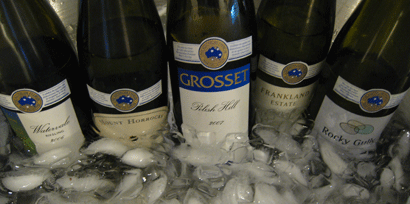
Yikes, it was a scorcher this past weekend and temperatures remained in the “excessive heat warning” levels for four days. So the most pressing question for wine lovers was: which wine pairs with 98 degrees? For us, the answer was dry Aussie riesling.
These young wines were wildly refreshing. Read more…



